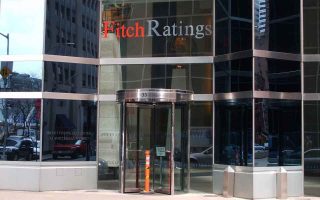PDMA ponders swap for old PSI notes

The Public Debt Management Agency (PDMA) is considering swapping bonds from the 2012 private sector involvement (PSI) debt easing scheme that did not participate in the 2017 swap, by reopening last March’s 10-year bond issue. Sources say that US bank Goldman Sachs will run the project.
The state’s borrowing program for 2019 has already been covered by the three bond issues earlier this year – a five-year, a 10-year and most recently a seven-year note – which drew a total of 7.5 billion euros. However, PDMA intends to continue enhancing the Greek bond market’s liquidity and depth, to further improve state borrowing costs and to replace or buy back any issues left out of the PSI restructuring that have a particularly low liquidity.
The agency’s objective is not to proceed to consecutive bond issues, despite exceptionally favorable conditions that have brought yields to historic lows, as it believes that this would send a message of haste to the markets. Its aim, instead, is to project a profile of normalcy.
PDMA is also seeking to reduce treasury bill issues and replace them with medium-term bonds, mainly three-year paper, as well as to use of the cash buffer (for instance for the repayment of the expensive loans of the International Monetary Fund), which has become expensive to maintain.
Earlier this month, meanwhile, PDMA Director General Dimitris Tsakonas visited the United States, where he met with institutional investors. Their talks focused on Greece’s borrowing program for next year and on the prospects of the Greek national debt following the rapid decline of the country’s bond yields. Last Thursday, the benchmark 10-year bond rate dropped at some point to 1.487 percent.
However, the main objective of Tsakonas’ trip to New York and Boston was to present investment funds with a specific proposal that was initially drafted by PDMA in November 2017 and was put forward last year before the outbreak of the Italian crisis forced it back into the drawer. The main idea is for PDMA to approach investors who stayed out of the PSI bond swap in November 2017.
Many US investors who own bonds of that strip, with total funds of 4.041 billion euros, did not participate in the bond swap, either for tax or other reasons related to the legislation governing the notes. They could, however, be approached again in the context of another swap.
The Greek side intends to swap those PSI bonds by opening the recent 10-year bond issue, while buying them back using cash is also not being ruled out. If, for example, some US funds agree to swap their PSI notes adding up to 2 billion euros (from the sum of over 4 billion euros) through the reopening of the 10-year issue, then PDMA would examine the repurchase of part or the entire remainder of 2 billion of the notes by paying cash. According to sources, the Greek side has already authorized Goldman Sachs to run the process.
According to Ciaran O’Hagan, head of European rates strategy at French lender Societe Generale, PDMA appears to be willing to turn its old PSI debt into 10-year Greek sovereign bonds. The issues left from the 2012 PSI process are notes of exceptionally low liquidity, contrary to PDMA’s objectives. It therefore makes sense that the agency should proceed with this swap in the coming months.
The feedback from the US investment funds following Tsakonas’ meetings earlier this month appears to have been positive. However, there remain several differences regarding the price of the notes’ swap, which is forcing PDMA to examine other options too, in order to maintain Greece’s presence in the markets. After all, the country’s financing needs are fully covered, giving the agency the leeway it needs to pursue targeted actions.
One factor pointing to a positive response by US institutional investors to a swap call is the particularly favorable market climate nowadays regarding Greek debt, thanks to the prospects of the Greek economy after the lifting of capital controls and the Greek government’s swift introduction of initiatives for enhancing growth and spurring investments. Analysts even argue there is further scope for improvement for the Greek bond rates.
Although the yield of the Greek 10-year bond currently stands at an all-time low, and about 59 percent lower than its level upon the note’s issue last March (it had a yield of 3.9 percent at the time), it remains particularly attractive for investors as it is the highest in the eurozone, in a context with a multitude of securities that have negative yields.
Furthermore, the investment funds that will agree to the swap of the notes they hold will also enjoy the added bonus of holding a bond (the 10-year one) that combines liquidity with an attractive interest rate, instead of the PSI notes that have a maturity date between 2023 and 2042 and cannot be liquidated until that time. The fact that the notes with long maturities – e.g. from 2028 onward – add up to more than 2.1 billion euros, renders the planned swap quite attractive if an agreement is reached on the price – something that has not been achieved yet.





